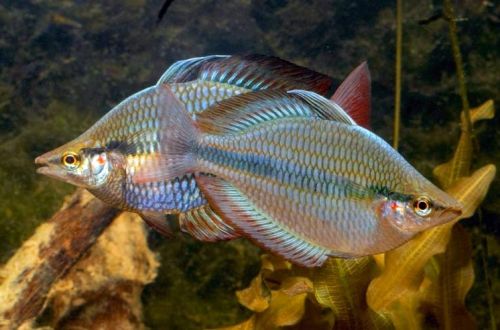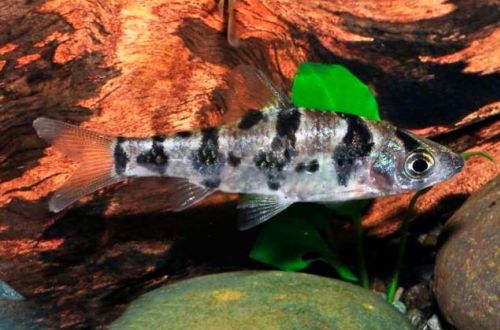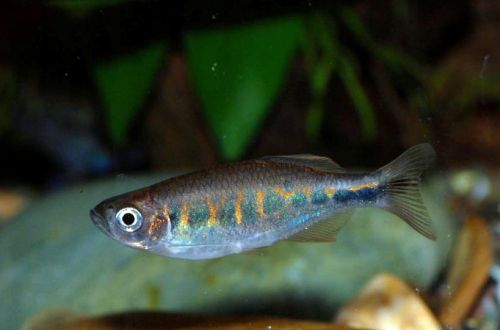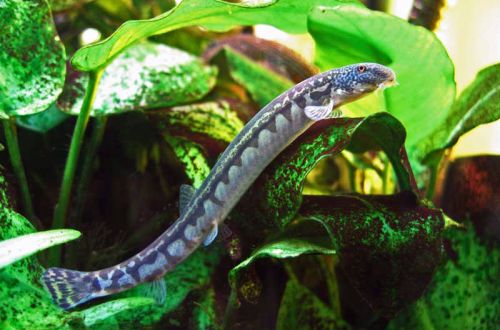
Three-lane iris
The three-striped iris, scientific name Melanotaenia trifasciata, belongs to the family Melanotaeniidae (Rainbows). It was first discovered in June 1895 by the Norwegian zoologist Knut Dahl. The description was published by Hialmar Rendal in 1922. It was he who gave the name “three-lane”. Looking at the fish, it is difficult to understand where these three stripes are in the body drawing. The answer is quite simple, although not obvious. Rendal did not describe a living specimen, but a preserved museum specimen, which at that time was already over 20 years old. Of course the heyday has changed a lot.

Contents
Habitat
The fish are native to the northern regions of Australia. They are found in almost all freshwater biotopes from swamps to fast rivers. The most common in flowing reservoirs with sandy substrates covered with silt, fallen leaves and other plant organic matter. They keep near thickets of plants or around snags at depths of up to 2 meters. The natural habitat is subject to seasonal changes, which is manifested in temperature fluctuations and hydrochemical values.
Brief information:
- The volume of the aquarium – from 150 liters.
- Temperature – 24-33°C
- Value pH — 6.5–8.0
- Water hardness – 8–20 dGH
- Substrate type – any
- Lighting – moderate
- Brackish water – no
- Water movement – light or moderate
- The size of the fish is about 12 cm.
- Food – any food
- Temperament – peaceful
- Keeping in a group of 6-8 individuals
Description
Adults reach a maximum length of 15 cm. The size of the fish is determined by factors such as food, free space, group size, competition and water temperature. In an aquarium, it usually grows up to 12 cm.
like most other rainbowfish, coloration varies by region and diet. The same species may look different, for example, if some live in rivers, others in swamps. The color can be dominated by blue, green, yellow and red shades. The presence of a wide dark stripe stretching from head to tail, and red fins remain unchanged. The color palette of males is more intense than that of females.
Food
In nature, they feed on insects and larvae, aquatic crustaceans and other invertebrates, pieces of plants, algae. This omnivorous nature allows the use of most popular foods in the form of flakes, pellets, etc. in aquariums, in combination with live or frozen foods.
Maintenance and care, arrangement of the aquarium
Many Australian fish species have evolved to survive in a wide range of environments, which can also change with the seasons. Because of this, rainbowfish are considered easy-to-keep fish, as opposed to highly specialized species that live in more predictable, stable environments.
For a group of 5-6 fish, you will need an aquarium with a size of 150 liters or more. The design is arbitrary, provided that there are places for shelters. The latter can be thickets of plants, snags, and decorative artificial objects. They are very active and often jump out of the water. Floating plants and the presence of a cover will help to avoid accidental jumping.
Aquarium maintenance is standard. It is necessary to keep warm water within the acceptable range of pH and dGH values and avoid sudden changes. Every week, part of the water is replaced with fresh water in 20-30% of the volume and organic waste (feed residues, excrement) is removed.
Behavior and Compatibility
Peacefully tuned in relation to other species. However, it is worth remembering that high activity may not be to the liking of slow fish. Intraspecific relationships are more complex. Males compete with each other for the attention of females, especially during the breeding season. The rivalry manifests itself in a “show of strength” when the males fluff their fins and swim around, trying to appear larger. They chase females, they will need shelters. In small aquariums, it is recommended to limit the number of males in favor of females.
Breeding / breeding
In the artificial environment, the seasonality of reproduction is not expressed. The fish give birth throughout the year. They spawn among thickets of plants. The clutch is from 200 to 500 eggs, and the female lays up to 50 eggs at a time, so spawning stretches for several days. The incubation period lasts 6-7 days. Parental instincts are not developed. Although parents generally do not eat caviar, it is still worth moving it to a separate tank with identical water conditions.
In the first days of life, fry need microfeed, such as shoe ciliates. As they grow older, Artemia nauplii, crushed flakes, granules, special feed for fry will become the basis of the diet.
Fish diseases
If the habitat does not meet the requirements, the fish receive poor-quality food or are attacked by neighbors in the aquarium, then the likelihood of a disease increases many times over. Irises are most susceptible to skin diseases in the form of parasitic invasions, bacterial infections. Read more about symptoms and treatments in the Aquarium Fish Diseases section.





